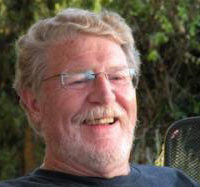In a recent New York Times article the newspaper’s senior science writer, William J. Broad, takes a dig at Republican presidential candidate Newt Gingrich’s obsession with the possibility of a “nightmarish of doomsday scenarios: a nuclear blast high above the United States that would instantly throw the United States in a dark age.”
The phenomenon that Gingrich refers to is an electromagnetic pulse (EMP), one side effect of a nuclear explosion. EMPs can destroy or disrupt virtually anything electrical, from computers to power grids. As the Times points out, Gingrich has used this potential threat to advocate bombing Iran and North Korea. “I favor taking out the Iranian and North Korean missiles on their sites,” he told the American Israel Public Affairs Committee in 2009. Gingrich has also talked up the EMP “threat” on the campaign trail.
Broad dismisses EMPs as “a poorly understood phenomenon of the nuclear age” and quotes Missile Defense Agency spokesman Richard Lehner poo-pooing the damage from an EMP attack as “pretty theoretical.”
While the Times is correct in dismissing any Iranian or North Korean threat-neither country has missiles capable of reaching the U.S., Iran doesn’t have nuclear weapons, and both have never demonstrated a desire to commit national suicide-what Broad does not mention is that the effects of EMP are hardly “poorly understood”: the U.S. has an “E-bomb” in its arsenal.
More than that, the Pentagon considered using it during the 2003 invasion of Iraq. Asked directly if the U.S. was considering using an EMP weapon, then Secretary of Defense Donald Rumsfeld answered, “You never know.”
The U.S. has known about the effects of EMPs since 1958, when a series of nuclear tests in the Pacific knocked out streetlights in Hawaii and radio reception in Australia for 18 hours. In large enough doses, EMPs can fry every electrical circuit in range, many of them permanently. One would essentially go from the 21st century to the 19th century in a few nanoseconds.
The U.S. began researching how to use EMPs as weapons shortly after the Pacific tests, and, while the details are classified, the Livermore and Los Alamos national labs have apparently come up with a working version of an “E-bomb.”
The principle is simple enough: a tube filled with explosives, wrapped with copper wire, encased in a metal shell. The copper wire is used to create a powerful magnetic field and when the explosives are fired, they compress the magnetic field to produce a powerful burst of electromagnetic energy called the “Compton effect.”
A large enough device can generate up to two billion watts, about what Hoover Dam turns out in a day.
The weapon is attached to a cruise missile. Any piloted craft would run the risk of frying its own electronics, because EMP waves can bounce off objects, like the ground, and be reflected back at the attack craft.
Britain’s Matra Bae Dynamics has produced an artillery shell that generates an EMP wave and is capable of knocking out electrical systems for several square miles.
The idea behind the “E-bomb” is that it would blind and disable any military force, but not inflict casualties (except if you are wearing a pacemaker or have electrical implants). “The electromagnetic pulse generator is emerging as one of the strongest contenders…to find effective weapons to defeat an enemy without causing loss of life,” writes David Fulghum, an EMP expert.
But EMP waves would also paralyze ambulances, hospitals, power plants and water pumping systems, a specific violation of the Geneva Conventions. Article 54, for instance, explicitly forbids rendering “useless” any “drinking water installations.”
There are ways to shield devices from EMPs, but they are expensive. So-called Faraday Cages intercept EMPs and redirect them into the ground, much like lightning rod.
While the exact details of the U.S. “E-bomb” are classified, its existence is hardly a secret. Nor is the U.S. the only nation currently researching the uses of EMPs. Any country with a nuclear weapon-Great Britain, France, Russia, China, Israel, India, Pakistan, and North Korea-is undoubtedly aware of its capabilities.
The fact that the effects of EMPs are well known, and that the U.S.-and apparently a number of other nations-has weaponized the phenomena, make it all the more curious that the Times treated the issue so lightly and failed to mention the U.S. program. Indeed, Broad says, “many scientists consider it yesteryear’s concern.”
That would certainly come as a surprise to the Livermore and Los Alamos National labs and the U.S. Air Force’s Research Laboratory at Kirtland Air Force base in New Mexico. There is also a test lab in Virginia.
Any such weapon should certainly be illegal under the strictures of the Geneva Conventions. Like poison gas, EMPs do not distinguish between military and civilian and, as such, are illegal under Article 48 requiring that warring parties “shall at all times distinguish between civilian population and combatants and between civilian objects and military objectives and accordingly shall direct their operation only against military objectives.”
Gingrich’s apocalyptic views on EMPs are longstanding, but he also uses them as raw meat for the “bomb Teheran and Pyongyang” crowd, a cynical election ploy from one of the more cynical politicians to grace the current U.S. stage.
But the “E-bomb” is real, and the general rule is, if you give the military a new toy, eventually they will want to test it in the real world. That world is filled with civilians- so-called “collaterals”- who will end up absorbing the brunt of this weapon.
Isn’t that worth reporting?
This article originally appeared in Dispatches from the Edge.










